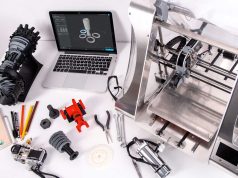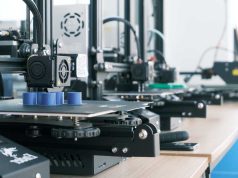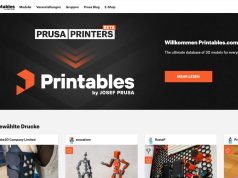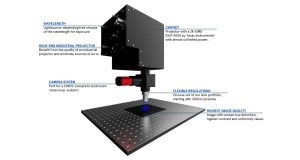Additive Manufacturing (AM), Generative Manufacturing
Table of Contents
Contrary to subtractive fabrication, where raw material is being removed by milling, machining, drilling (e.g. CNC machines) and other processes like electrical discharge machining; additive manufacturing deals with adding, applying and depositing material. A digital 3D model (e.g. a CAD file) which is translated into a machine readable code serves as a template in this process.
Besides additive and subtractive processes, further following two methods are being distinguished:
Forming processes
An object is being formed by applying mechanical or thermal forces. This is done by either folding, pressing or moulding.
Hybride processes
This term describes all other processes which cannot be clearly categorised or consist of several techniques.
From Rapid Prototyping to Rapid Manufacturing
Whereas models and prototypes were once manually built, nowadays automated manufacturing processes are being employed. Instead of manual model making by using cardboard and foam or modelling design drafts from clay, templates for manufacturing are created using computers. As a result money and time can be saved during product development.
As early as 1984 the first additive method called Stereolithografie was developed by Chuck Hull (founder of 3D Systems). This method was commercialised only years later and further processes like 3DP and FDM evolved and were patented. Initially theses methods were used to create inexpensive prototypes for product development (e.g. Formula One) employing Rapid Prototyping. Being only used as illustrative models, requirements in regard to durability, quality and stability have not been particularly demanding in the beginning. However, over the years quality has significantly and gradually improved through advanced machines and material as well as with the aid of high-performance computers.
Some Processes allowed not only the production of objects serving as prototypes but also as a final product. The narrowing line between prototype and end-product coined the terms Rapid Manufacturing and Direct manufacturing.
During the last years mainly the non-technical term “3D Printing” has evolved in everyday language, being used for all additive manufacturing methods. 3D Printing (3DP) actually describes just one of the many processes, however it is used commonly as a synonym for additive manufacturing.
Promotional video of 3D Systems in 1989:
Current Situation
Although technologies have been existing for a long time, Rapid Manufacturing systems have been experiencing a real boom during the last few years. This can be explained by the following reasons:
Expiry of patent on Fused Deposition Modelling (FDM): A few years ago the patent on the priting method FMD (former FFF) expired and allowed for the open source 3D printer RepRap to emerge.
Fascination Technology: The pure imagination of printing ready to use products at home is fascination for many people and boosts the current trend. Inspired by Maker-, DIY- and Open Source-Philosopies and fascinated by Star Trek’s “Replicator”, this technology became increasingly popular. Some people even see another industrial revolution as well as decentralising and/or democratisation of products.
Better Access and vaster understanding for computer systems: Due to continuous computerisation over the last decades, computer systems and as a consequence thereof (3D)software experienced a massive increase in users. The inhabitation level and reserve in connection with computer therefor increased drastically.
Price cutting and technical development of 3D printing systems: Additive Manufacturing Systems became more interesting and affordable due to a higher demand, advanced technique and further development. Especially the open hardware project RepRap resulted in a true boom in regard to self-build 3D printer and therefor made the devices affordable for private users.
Emerge of 3D service providers: The relatively high costs of professional AM systems led to centralised devices in the form of production facilities. Some companies made their services available not only for manufacturers but also for private clients via online services. As a consequence the first 3D printing service providers emerged and therefor privat users as well as small corporations had access to 3D printing.
Attention from politics and investors: Recently this technology gets also support from politics and investors. Governments of several countries (among them China, USA, UK and EU) see a possibility to bring production back to their own countries, save labor costs or enforce innovation by focusing on additive production methods. Research and projects in this regard have been and are still being financed by the public sector and privat investors.
The scope of application is overlapping sectors as well as industries and not only limited to manufacturing anymore.
Fields of application for AM-technologies (partly experimental):
- medicine (bio-printing for tissue engineering, implants, prosthetics, dental implants, models for surgery preparation as well as fabrication of hearing aids)
- science and research (nano-printing, bio-printing and astronautics)
- arts, fashion and jewellery production (textile fabrics, jewellery, moulds for precious metal jewellery)
- aero- and astronautics (production of lightweight and robust parts)
- production (mostly development of production, prototyping, tool making)
- food sector (currently experimental)
- building sector (contour crafting) (with the aim of printing entire buildings)
Additionally these systems have become very popular with hobby-users, DIY-ers, modeller, consumers and private users and further they are increasingly applied in smaller companies and start-ups for low volume production.
Run on market leadership
That the competition in this industry is fully under way is generally less known. There is an ongoing battle for market shares between manufacturers as well as service providers. Companies are being bought in, disputes over patents arise and there is a clear trend towards a market characterised by a few big suppliers with high market shares. Markets will probably long be clearly defined before the average private user discovers 3D printing for himself. Not only private companies are competing for future market shares, also universities and governments discovered the significant future topic and have been financing science projects as well as supporting 3D printing in the education sector.
Researchers and futurologists confirm these prognoses. Whoever is able to be a leader in this technology at the right time, secures himself a return in future.
>> Part 2: Overview of Current 3D Printing Methods
(c) The copyright of this article is held by 3Printr.com. No part of it may be reproduced, embodied or published (with exception of setting links to our site) without the prior written permission of the publisher. The articles were scientifically prepared do not intended to be exhaustive but are provided for guidance. Misprints, typing errors and any content-related errors reserved.
Subscribe to our Newsletter
3DPresso is a weekly newsletter that links to the most exciting global stories from the 3D printing and additive manufacturing industry.






















